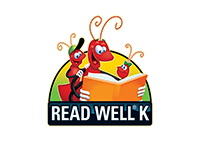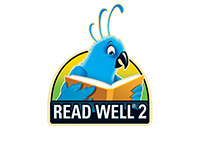
Support young learners to keep them from falling behind grade level
Read Well is a research-based comprehensive K–3 reading and language arts solution that helps teachers effectively target students at all stages of development. This evidence-based approach builds the critical skills students need to be successful readers and learners.
School districts across the country use Read Well in primary grades to support all types of early learners

- Whole-class activities address different learning styles
- Focus on phonics and phonemic awareness with games, songs, stories, art projects, and handwriting activities
- Small-group instruction focuses on decoding, vocabulary, comprehension, and fluency
- Composition unit provides explicit instruction in the writing process, writing traits, handwriting, and read-aloud comprehension and vocabulary

- Features individualized small-group instruction where students:
- Practice story reading
- Learn vocabulary
- Develop decoding strategies
- Improve comprehension
- Master test-taking strategies
- Increase fluency
- Composition unit provides explicit instruction in the writing process, writing traits, handwriting, and read-aloud comprehension and vocabulary
- Spelling and Writing Conventions unit incorporates complementary whole class instruction

- Continues to build the foundational skills necessary to reading more sophisticated narrative and expository text selections
- Focus on low-frequency letter/sound associations, word parts, and multisyllabic word fluency
- Expansion of vocabulary, content knowledge, and comprehension skills
- Spelling and Writing Conventions unit incorporates complementary whole-class instruction
- Composition unit provides explicit instruction in the writing process, writing traits, handwriting, and read-aloud comprehension and vocabulary

- Continues to build the foundational skills necessary to reading more sophisticated narrative and expository text selections
- Focus on low-frequency letter/sound associations, word parts, and multisyllabic word fluency
- Expansion of vocabulary, content knowledge, and comprehension skills
- Spelling and Writing Conventions unit incorporates complementary whole-class instruction
- Composition unit provides explicit instruction in the writing process, writing traits, handwriting, and read-aloud comprehension and vocabulary
Efficacy Studies Demonstrate Effectiveness Across All Student Demographics
"Results indicate that for kindergarten students, Read Well gains exceeded comparison program gains in the areas of letter naming, phonological awareness, phonemic decoding, listening comprehension, and total reading; and, for first grade students, Read Well gains exceeded comparison program gains in phonological awareness, phonemic decoding, oral reading fluency, and vocabulary and comprehension composite."
"In sum, the evaluation found that Read Well students from a high-poverty, predominantly nonwhite school district in the state of Florida demonstrated above average performance on a nationally norm-referenced, standardized test of reading at the end of kindergarten and at a one-year follow-up at the end of first grade [using Read Well]."
— Read Well Results in a Large Florida School District: Lee County Public Schools
"Before Read Well implementation, Mountain Gap Elementary (Huntsville City Schools, AL) had the lowest percentage of kindergarten students in the county scoring at or above benchmark in the spring of 2005; 45 percent of their kindergarten students scored at or above benchmark, compared with the state average of 91 percent. After two years of Read Well instruction, the percentage of Mountain Gap students scoring at or above benchmark increased to 95 percent, reflecting a 50 percent gain and placing the school above the state average."
— Evidence of Effectiveness With the Read Well Curriculum: Alabama School Success